Flowering trees or trees that start to show their leaves are some of the first and most striking signs of spring. They are a sign that nature is starting to ‘wake up’ and action is happening!
Travel across the country with us and experience some examples of beautifully blooming trees commonly found in each province.
British Columbia – Pacific Dogwood
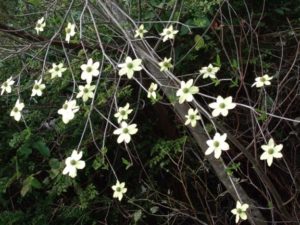
Found in coastal British Columbia, Pacific dogwood bloom white flowers in early spring and have red edible but bitter berries that ripen in early fall and are a common food source for many animals. Dogwood are often used as ornamental trees due to their small size and beautiful flowers.
The trees are the host plant for summer and spring azure butterflies, one of the first butterflies to emerge from its pupa in the spring. The butterfly depends on the nectar of early flowering plants, such as the dogwood, as a food source.
Alberta – Thinleaf Alder

Often found along riverbanks, the thinleaf alder is a nitrogen fixer (i.e. it improves the fertility of the soil for other species) and their roots help prevent erosion.
This tree blooms in early spring, or as early as March in some regions. The male flowers are long, soft catkins and the female flowers look like tiny pine cones. The catkins are known to be edible and are high in protein, although they are very bitter and not very tasty.
Saskatchewan – Green Ash
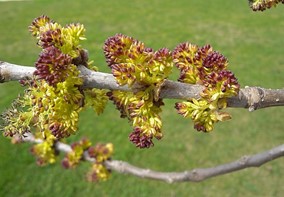
Flowers bloom in April and appear about two weeks before the leaves develop. Each tree is either fully female or fully male. Once pollinated, female flowers become samaras, which are winged seeds sometimes called ‘helicopters’. They are cross pollinated by the wind.
Many insects feed on the foliage or wood of these trees. A common pest is the emerald ash borer, which has devastated many ash trees across North America.
Manitoba – Bur Oak
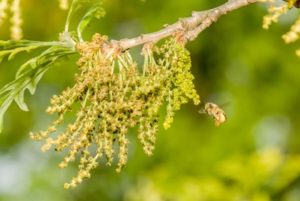
Normally found in deciduous forests, bur oak are able to survive in difficult climates.
Pollinated by the wind, male and female flowers appear on the same tree between March and May. Once a female flower is pollinated it matures into an acorn, after which they are dispersed by animals. The flowers appear around the same time as the leaves. Acorns are edible but must be prepared correctly as they contain some toxins.
Ontario – Canada Plum
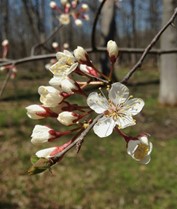
Beautiful light pink-white flowers appear between April and May before the leaves bud. Plum blossoms are very fragrant with a very flowery smell.
Canada plum is an important source of pollen and nectar for native pollinators. Many animals have been seen eating the fruit of this tree including black bears, squirrels, turtles and bats. The fruit is also edible to humans and can be made into jams and jellies or eaten straight off the tree.
Quebec – American Sycamore
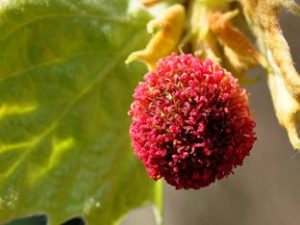
Small dense flowers appear in April and May at the same time the leaves appear. Each tree has both male and female flowers which are wind pollinated. The male flowers are red while the female flowers are yellow. Once pollinated, the female flowers mature into fruit consisting of a small brown fuzzy ball with many small seeds, which act as a food source for many birds and animals.
Naturally occurring sycamore are often found in wetlands, however they were also widely planted in cities.
New Brunswick – Ironwood
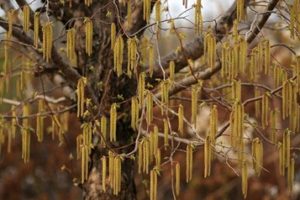
Flowers bloom between April and May in the form of catkins. While male and female flowers appear on the same tree, they are not very showy. Male flowers are red-brown and the female flowers are light green. Once pollinated the female catkins develop into clusters of sac-like fruit which contain seed-bearing pods.
Ironwood trees are host to red-spotted, purple, and eastern tiger swallowtail butterflies. The fruit can be eaten by birds and small mammals. The wood is considered very dense and resistant to fire.
Nova Scotia – American Beech
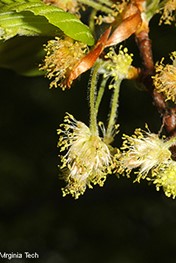
Male and female flowers appear on the same tree in April at the same time as the leaves. The male flowers are clustered into a ball shape and are small and yellow. The female flowers are smaller and red in colour and are found on the end of new twig growth. Pollinated flowers become beechnuts. Beechnuts are edible and can be pressed for oil or roasted for coffee, and they are a food source for many birds and mammals.
Beech trees are often found in mixed or shaded forest often around creeks and ravines and prefer moist soils.
Newfoundland – Red Maple
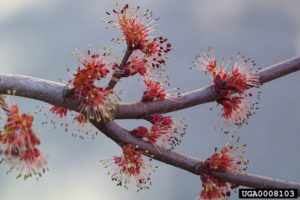
One of the most abundant and widespread trees in eastern North America, red maples are usually found in swamps and areas with moist soils and have been nicknamed swamp maples.
Red maple is an important host for many native insects, mammals and birds in Canada, such as red squirrels, Downy woodpeckers and Canada warblers.
Flowers appear before leaves in early spring, usually in March or April. The red male flowers and yellowish green female flowers grow on the same tree but on separate branches with the blooms, sometimes producing a mild sweet cherry or almond scent, only lasting about a week. The flowers produce fruit, or samaras, in late spring.
Prince Edward Island – American Elm
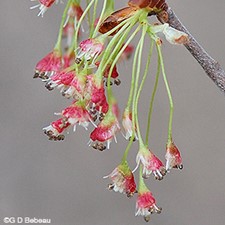
Flowers appear in May and appear about 2-3 weeks before the leaves. The flowers are bisexual, and are long, slender and bright red in colour. They are pollinated by the wind and mature into samaras once pollinated.
American elm can grow in a variety of habitats including hillsides, uplands, swamps and streambanks. Prior to Dutch elm disease, these trees would often majestically line city streets.
Yukon – Paper Birch
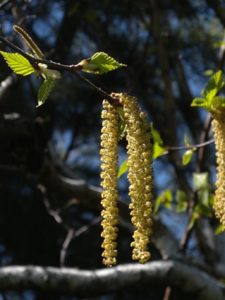
Usually found in mixed wood forests, paper birch are adapted to colder climates.
Appearing in April or May, flowers are found in the catkins and are formed around the same time as the leaves. The male flowers are yellow and the female flowers are green or red. The catkins provide food for chickadees, fox, sparrows and other birds.
Nunavut – Trembling Aspen
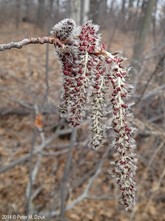
A part of the willow family, trembling aspen have the widest range of any native tree in North America, and are found in every province and territory in Canada. They have a short life span, about 50 years, and their rotted stumps provide habitat for cavity nesting birds. They grow and establish quickly, making them a great tree to grow in disturbed or burnt areas.
Male trees produce catkins in late winter, which produce red or pink pollen sacs in March to May. Female trees receive pollen that is dispersed by the wind, and once pollinated the female tree will release white fluffy seeds. Catkins appear before leaves.
The trembling aspen is the favourite food of beavers.
Northwest Territories – Black spruce
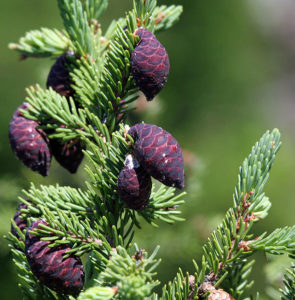
With the ability to grow in areas where there is permafrost, black spruce tend to prefer the acidic soils of bogs. Because they grow in colder climates, they have a short amount of time to grow each year and therefore have a very slow growth rate.
Black spruce produce flowers in spring and each tree has both male and female flowers. Male flowers are red and female flowers are purple and found at the crown of the tree. The female cones are pollinated by the wind, which promotes cross-pollination with trees further away to have greater genetic diversity. The female cones become fruit in the form of a cone and open up to drop seeds. The seeds are eaten by birds, squirrels, chipmunks and mice. Black spruce are often found in areas where other vegetation is sparse and provides an important cover for wildlife.
Special Offer! When you buy a 2-year subscription to Canada’s Local Gardener magazine, the magazine will donate $5 to Tree Canada and Tree Canada will plant a tree. The only magazine devoted to gardening from coast to coast across the nation. Discover the flowering trees in your neighbourhood, today!
Back to all articles